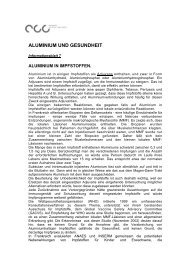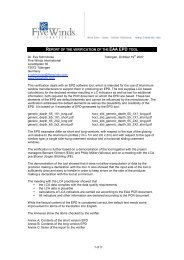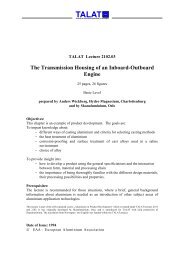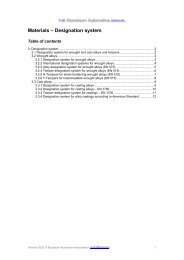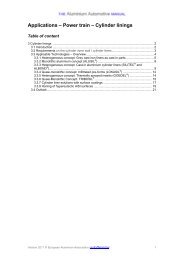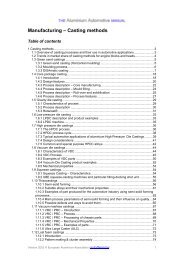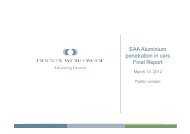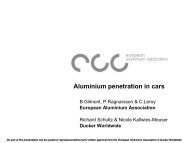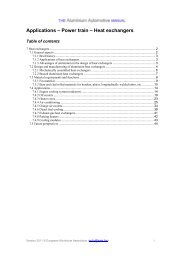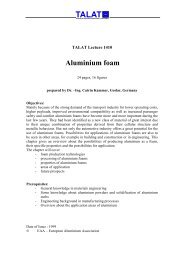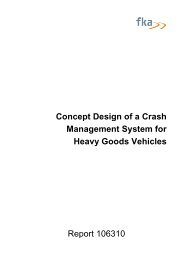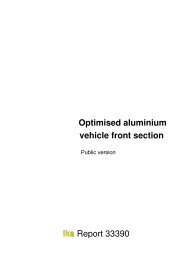aluminium in commercial vehicles - European Aluminium Association
aluminium in commercial vehicles - European Aluminium Association
aluminium in commercial vehicles - European Aluminium Association
Create successful ePaper yourself
Turn your PDF publications into a flip-book with our unique Google optimized e-Paper software.
EUROPEAN ALUMINIUM ASSOCIATION ALUMINIUM IN COMMERCIAL VEHICLES CHAPTER V 51<br />
7.1. Elevated<br />
temperature<br />
The loss <strong>in</strong> strength at higher<br />
than ambient temperatures is<br />
negligible for temperatures up<br />
to 100°C (short time exposure)<br />
or 80°C (long time exposure).<br />
7.2. Low and very low<br />
temperatures<br />
Contrarily to most other eng<strong>in</strong>eer<strong>in</strong>g<br />
metals, the mechanical<br />
properties improve at low temperatures<br />
and especially the<br />
elongation, which makes <strong>alum<strong>in</strong>ium</strong><br />
an ideal metal for severe<br />
w<strong>in</strong>ter conditions and even<br />
cryogenic applications (see<br />
Figure V.1)<br />
Further examples can be found <strong>in</strong><br />
standard EN 12392 “Alum<strong>in</strong>ium<br />
and <strong>alum<strong>in</strong>ium</strong> alloys - Wrought<br />
products - Special requirements<br />
for products <strong>in</strong>tended for the production<br />
of pressure equipment”.<br />
When subjected to even higher<br />
temperatures, then the loss <strong>in</strong><br />
mechanical properties is moderate<br />
for non-heat treatable alloys<br />
<strong>in</strong> the O/H111 temper and for<br />
heat treatable alloys <strong>in</strong> the<br />
T1/T4 temper.<br />
CHANGE OF MECHANICAL CHARACTERITICS<br />
AS A FUNCTION OF TEMPERATURE FOR<br />
ALLOY 5086 O<br />
R m - R p 0,2<br />
MPa<br />
500<br />
400<br />
300<br />
200<br />
100<br />
‰<br />
The loss <strong>in</strong> mechanical properties<br />
at temperatures above<br />
100°C is very pronounced for<br />
non heat treatable alloys <strong>in</strong> the<br />
H12, H16 temper as well as for<br />
heat treatable alloys <strong>in</strong> the<br />
T5/T6 temper.<br />
FIGURE V.1<br />
R m<br />
A%<br />
R p0,2<br />
‰<br />
50<br />
40<br />
30<br />
20<br />
10<br />
0<br />
-196 ° + 20 ° + 200 °<br />
Temperature °C<br />
A%



